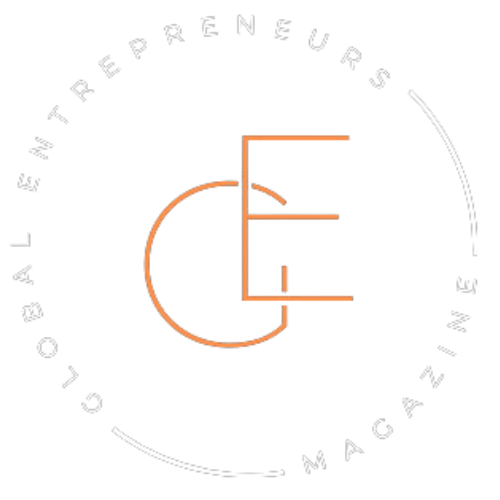In 2012, a guy tried to convince investors that people would one day pay to sleep in a stranger’s house. Not a hotel. Not a B&B. Just some random apartment with a mattress on the floor. He was met with raised eyebrows and polite nods, then silence. One investor even asked, “So… you’re pitching a couch-surfing app?”
The guy was Brian Chesky. The idea was Airbnb.
Ten years later, Airbnb is one of the most valuable travel brands on the planet. But back then? It sounded like a joke. That’s the thing about visionary founders—they’re not reading from the same script as everyone else. They see the future not as a prediction, but as a pattern that’s already starting to form.
It’s not magic. It’s not luck. And it’s not about having access to some crystal ball. These founders spot things the rest of the world is still blind to—not because they’re smarter, but because they’re paying attention in ways others aren’t.
This isn’t about being a trend chaser. It’s about becoming a trend spotter. And that means learning to sit in uncertainty, trust your gut before the data backs you up, and act while the world still thinks you’re out of your mind.
So the question is: how do they do it?
The uncomfortable edge: why vision often feels like foolishness
Ask anyone who’s ever built something ahead of its time, and they’ll tell you—being early doesn’t feel exciting. It feels isolating. When everyone around you is nodding politely but quietly betting against you, it takes more than confidence to keep going. It takes conviction rooted in something deeper than approval.
Take Elon Musk, for example. Before SpaceX launched its first rocket, he was told it was a terrible idea. Billionaires didn’t build space companies. They bought islands or sports teams. When Tesla started, legacy automakers laughed at the idea that people would pay a premium for an electric car. Musk wasn’t seen as a genius then. He was seen as reckless.
And yet, that’s the pattern. Visionary founders rarely look “visionary” in real time. They look off. Misaligned. Too obsessed with problems most people don’t even recognize yet.
It’s not that the world can’t see what they see. It’s that the world hasn’t felt it yet. The pain isn’t urgent. The need isn’t obvious. And until it is, building for the future will always look like building in the wrong direction.
The edge of innovation has always been uncomfortable. It demands founders who can stomach the silence, the side-eyes, and the long stretches where it feels like no one gets it. Because that’s the tradeoff: if you want to build the next big thing, you have to be willing to look a little foolish now.
Pattern spotting: where future-facing ideas are born
Some people wait for a headline to tell them what matters. Visionary founders notice it before it becomes one.
They don’t look for consensus. They scan for inconsistencies. They notice what’s happening on the fringes—where subcultures, underground forums, or overlooked communities are quietly shifting. Not everything they spot turns into something big. But they pay attention to the weird stuff. Because that’s usually where change begins.
It might be a drop in engagement on a mainstream platform. A weird uptick in DIY biohacking groups. A kid in a dorm room creating a decentralized app just for fun. These things seem small. They are small. Until they’re not.
In the early 2000s, Reed Hastings saw people complaining about late fees. Blockbuster shrugged. Netflix didn’t. Hastings wasn’t just watching customer behavior—he was listening between the lines. And that pattern led to a total rewrite of how people consume entertainment.
Visionary founders aren’t necessarily ahead of their time. They’re just more present. They catch the tension before it becomes a tear. And once they see it, they can’t unsee it.
Acting before the market is ready
Seeing what’s coming is only half the game. The real test is deciding to move before anyone else does.
That’s where most people hesitate. They wait for the market to give them permission. They want data, validation, certainty. Visionary founders move without it. Not recklessly—but without waiting for applause.
Take Stewart Butterfield. Slack wasn’t born as a productivity tool. It was a side effect of a failed gaming company. The internal messaging system they built to stay organized felt more useful than the game itself. Most people would’ve scrapped the whole project. Butterfield shifted focus, even though no one was asking for another communication platform. Especially not one built by a company that just shut down its main product.
Turns out, the market was ready for something better—it just didn’t know how to ask for it yet.
That’s the strange tension founders live in. Build too early, and no one uses it. Build too late, and you’re one of many. The sweet spot is acting when it still feels premature. It means building something while the world still thinks it doesn’t need it.
Building conviction when no one else sees it

It’s easy to believe in an idea when people are nodding along. It’s harder when you’re the only one who sees it clearly—and the room goes quiet when you talk about it.
That’s where conviction gets built. Not through hype, but through obsession. Visionary founders tend to fixate. They chew on problems long after everyone else moves on. They’re not chasing validation—they’re chasing a feeling they can’t quite shake.
Sara Blakely, the founder of Spanx, kept a notebook filled with product ideas. One of them was footless pantyhose—an idea no one thought made sense. She didn’t pitch it to a focus group. She didn’t run surveys. She cut the feet off her own hosiery and tested it herself.
She kept pushing not because someone told her it would work—but because she knew, deep down, it solved something real. And once she was convinced, she didn’t need anyone else to be.
Conviction like that isn’t loud. It doesn’t beg for agreement. It builds in the background, shaped by quiet confidence and the kind of persistence that doesn’t flinch when people don’t get it.
Filtering the noise: what visionary founders don’t do
Every week, there’s a new shiny thing. A new buzzword. A trending app. And the temptation to chase it is real—especially when it seems like everyone else is.
But the founders who stay ahead aren’t reactive. They’re selective.
They don’t build for headlines. They ignore hype cycles. If something’s already mainstream, they’re probably already looking past it. That doesn’t mean they ignore what’s popular—it means they ask better questions. Is this sustainable? Is it a signal or just noise? Does it solve a deep problem or just scratch an itch?
Steve Jobs famously said innovation is saying no to a thousand things. That’s not about minimalism. It’s about clarity. Visionary thinking requires space. And noise eats space.
So they cut distractions. They’re not constantly switching gears. They protect their attention like it’s equity—because in many ways, it is. When the rest of the world is fixated on the now, they’re quietly working on what will matter next.
Why most people miss the future (and how to train yourself not to)
Most people don’t miss the future because they lack intelligence. They miss it because they’re trained to wait.
Wait for proof. Wait for consensus. Wait until it feels safe. But vision doesn’t show up fully formed with a neon sign that says this is it. It starts as a hunch. A friction point. A quiet observation that doesn’t fit the current pattern.
The difference is, visionary founders don’t dismiss those signals. They lean in.
They stay curious about things that feel odd or out of place. They ask better questions, even when they don’t have answers. They don’t try to be contrarian just to stand out—they’re just unwilling to look away when something feels off.
Training that mindset isn’t complicated. But it does require attention.
- Watch how people behave, not just what they say.
- Listen to complaints—they’re often insights in disguise.
- Read outside your industry. The best ideas usually come from elsewhere.
- Get comfortable being misunderstood.
The future doesn’t arrive with fanfare. It starts as background noise. The trick is learning to hear it before it gets loud.
The reward of being early—and the cost
Being early sounds glamorous until you live it.
It means explaining your idea over and over and watching people politely pretend to get it. It means building a product before the tools are mature, before the audience is ready, before the money makes sense. And sometimes, it means failing—publicly, painfully, and alone.
But here’s the thing: that’s the price of a head start.
Evan Williams co-founded Odeo, a podcasting platform that was too early. It didn’t take off. Most people would’ve quit. Instead, he let his team explore side projects—and one of them became Twitter.
Being early often means getting it wrong the first time. But it also means being close enough to recognize what the future actually wants. That proximity is the gift. It teaches you how to listen better, build smarter, and move faster when the timing finally clicks.
The cost of being early is steep. But the upside, if you’re willing to adapt, is getting to build the category instead of competing in it.
The founder as future reader
A decade ago, someone saw something the rest of the world ignored. It looked strange. Risky. Impossible. Today, it looks obvious.
That’s what makes visionary founders different. They don’t wait for permission to believe in what they see. They spot patterns most people dismiss. They commit to ideas before the market claps. And they hold that vision through silence, setbacks, and second-guessing.
The future doesn’t show up on a calendar. It creeps in, sideways, quiet at first. Most people won’t notice until it’s loud. But some do.
They notice the shift in tone. The unmet need. The flicker of something not quite right with the status quo.
And when they do, they move—not because it’s safe, but because they can’t not.
So here’s the question that matters:
What are you seeing today that no one’s talking about yet?




